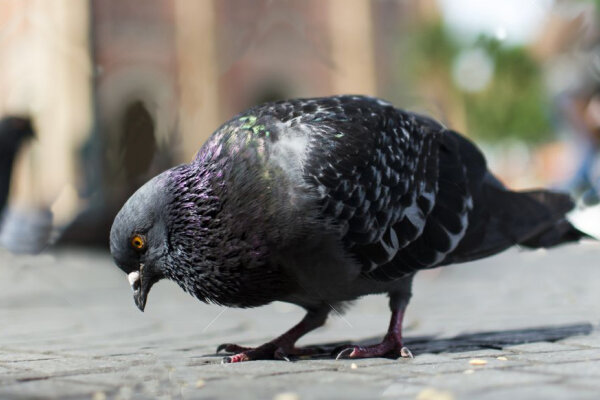2016-10-20

Animals exploit visual information to identify objects, form stimulus-reward associations, and prepare appropriate behavioral responses. The avian “prefrontal” nidopallium caudolaterale (NCL) contains neurons that play a key role in these processes. But do these neurons code for pictorial aspects, stimulus value, or sensorimotor contingencies? To test these questions, biopsychologists from Bochum, Cold Spring Harbor and Mainz subjected pigeons to a Pavlovian sign-tracking paradigm in which visual cues predicted rewards differing in magnitude (large vs. small) and delay to presentation (short vs. long). Subjects’ strength of conditioned responding to visual cues reliably differentiated between predicted reward types and thus indexed valuation. The majority of NCL neurons discriminated between visual cues, with discriminability peaking shortly after stimulus onset and being maintained at lower levels throughout the stimulus presentation period. However, while some cells’ firing rates correlated with reward value, such neurons were not more frequent than expected by chance. Instead, neurons formed discernible clusters which differed in their preferred visual cue. The authors propose that this activity pattern constitutes a prerequisite for using visual information in more complex situations e.g. requiring value based choices.

Animals exploit visual information to identify objects, form stimulus-reward associations, and prepare appropriate behavioral responses. The avian “prefrontal” nidopallium caudolaterale (NCL) contains neurons that play a key role in these processes. But do these neurons code for pictorial aspects, stimulus value, or sensorimotor contingencies? To test these questions, biopsychologists from Bochum, Cold Spring Harbor and Mainz subjected pigeons to a Pavlovian sign-tracking paradigm in which visual cues predicted rewards differing in magnitude (large vs. small) and delay to presentation (short vs. long). Subjects’ strength of conditioned responding to visual cues reliably differentiated between predicted reward types and thus indexed valuation. The majority of NCL neurons discriminated between visual cues, with discriminability peaking shortly after stimulus onset and being maintained at lower levels throughout the stimulus presentation period. However, while some cells’ firing rates correlated with reward value, such neurons were not more frequent than expected by chance. Instead, neurons formed discernible clusters which differed in their preferred visual cue. The authors propose that this activity pattern constitutes a prerequisite for using visual information in more complex situations e.g. requiring value based choices.